Based on our understanding of bitcoin, we’d like to list and classify the factors affecting the cryptocurrency mining revenue and create a simple model.
There are many factors related to mining revenue, but they can be roughly divided into four major categories as follows:
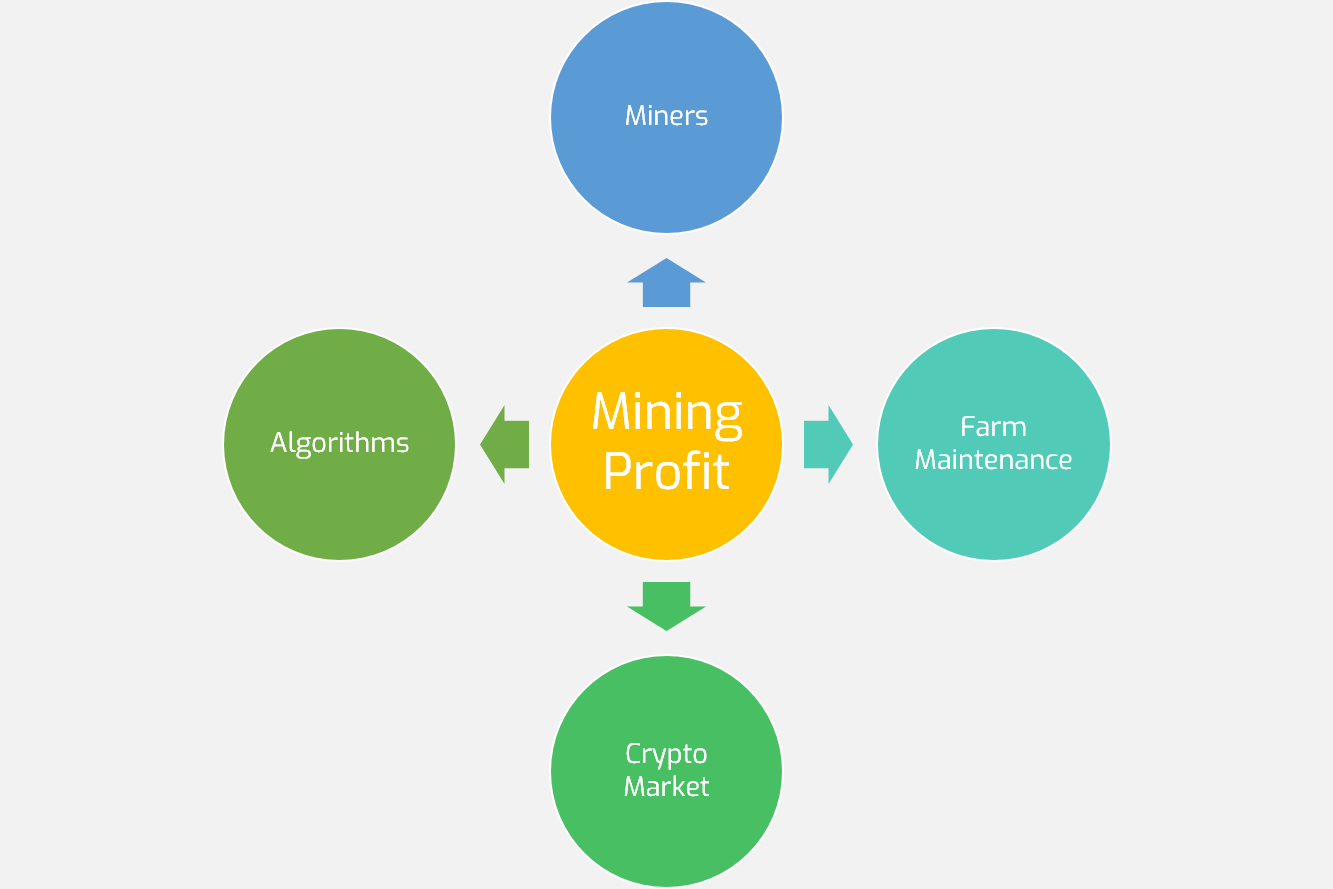
- Algorithm: such as difficulty adjustment, revenue per block, etc., which are the features of bitcoin itself. Although they will not be affected by external factors, they will influence other factors.
- Miners: such as hash speed, power consumption, costs, etc. All these factors are most likely affected by upstream chip manufacturers or miner assembly manufacturers. The hardware factors will not have big changes within short term, so it is predictable with high operability. These factors can be manually changed by the mining farms and workers to increase revenue.
- Farm Maintenance: such as miner setting-up time, electricity fees, operation maintenance capability, etc. Just like the hardware factors, they are also determined by the upstream chip manufacturers or miner assembly manufacturers. Due to the high predictability, they can be manually changed by the mining farms and workers to increase revenue.
- Crypto Market: such as bitcoin prices, hashrate growth rate, difficulty growth rate, etc. BTC prices seem to be relatively stable within short term, but no one knows when there will be a sharp rise and fall in the medium and long term (maybe there’re some unknown shady deals). It’s certain that the hashrate and difficulty growth rate will keep increasing within medium and long term, but there will be big changes within short term. Although the predictability of market factors is lower than other types of factors, it is still the factor with great impact on mining revenue. We can read relevant content later in the revenue model.
In this article, we will make further analysis on various factors, especially the impact on mining revenue, but the specific concepts and definitions will not be discussed here.
Algorithm
Ⅰ. HashRate
The HashRate is the sum of all miner’s hashrate. The miner layout is completely a kind of market behavior, so the hashrate is classified into the market factor for further discussion. Here, we only discuss the relationship between hashrate and difficulty.
- The relationship between difficulty and hashrate can be simply known as: difficulty = hashrate / constant (constant is approximately equal to 7M). Difficulty is determined by hashrate, that is, higher hashrate brings higher difficulty and vice versa.
- However, hashrate cannot be calculated in real time, which is the statistical value after each cycle (about 14 days), so there is certain degree of hysteresis.
Ⅱ. Difficulty
It’s also a value based on post-statistics to ensure one block is generated every 10 minutes and adjustment after 2016 blocks have been mined. The following aspects should be noticed:
- Difficulty does not always increase. If the average time of block generation in the last cycle (2016 blocks) is longer than 10 minutes, that is, in the case of lower hashrate, the difficulty in current cycle will decrease so that the block generation time will be accelerated.
- Since it’s based on post-statistics, the difficulty changes will occur about 1-2 cycles later than the hashrate. If the hashrate increases, the mining speed will increase in the 1~2 cycles, and the mining revenue will increase; otherwise the revenue will decrease. However, it still maintains balance in the long run.
- In terms of mining, we should focus on the increase speed of difficulty. Lower growth rate brings fast returns while higher rate results in slow returns even losses.
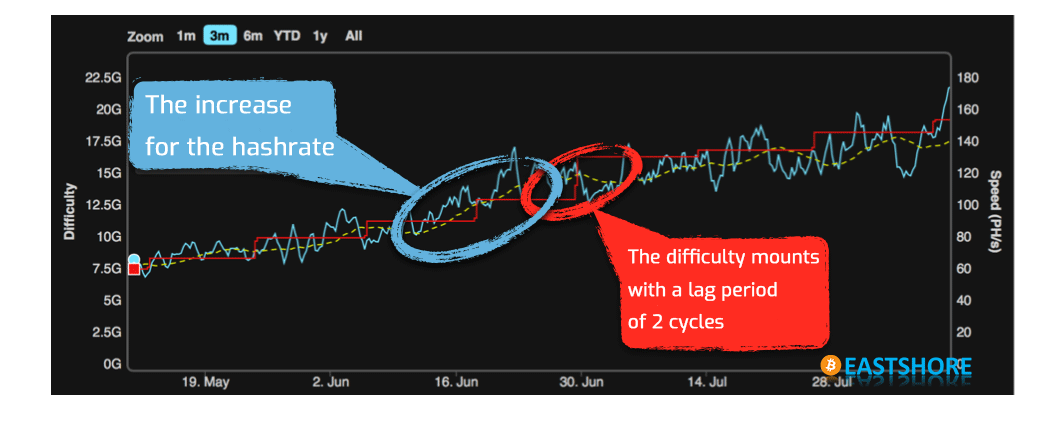
Miners
Changes in hardware factors are related to ASIC chip updates and the efficiency of miner assembly manufacturers.
- Hashrate: miner hashrate. For instance, some miners are claimed to reach 1T, but many are the only optimal values theoretically. The mining revenue should be based on the stable hashrate in the actual situation.
- Power consumption: Power consumption of the miner itself. Just like the miner hashrate, we should distinguish the optimal power consumption and the actual one. The mining revenue should be based on the stable power consumption in the actual situation.
- Miner price: Calculation of miner price seems quite complicated. There’s only one thing to be reminded: some quotations have included other factors such as labors / hashrate compensation / failure replacement. For joint mining activities, the miner prices included the aforesaid factors should be the most reliable ones. Otherwise, the extra costs in actual deployment will be uncontrollable which will affect the calculation of the final revenue.
Farm Maintenance
Ⅰ. The deployment period
The deployment period refers to the time period from the production, installation and test to the formal online mining of the designated miner models with personal investment. The longer deployment period means the later revenues generated by investment.
Meanwhile, since the hashrate and difficulty are gradually increasing, it means less revenue with the same miner hashrate. Simply speaking, the shorter deployment period brings greater mining revenue and shorter cost return.
The current standard for miner deployment period is as follows:
- Investment mining agreement, 3 days.
- Purchase Miner, 20 days.
- Delivery time, 7 days, based on the actual location of the mining farm.
- Installation and test, 7 days.
Based on aforesaid schedule, the current miner deployment cycle is about 30 days (±7 days) and 3 difficulty cycles (14 days/cycle).

Ⅱ. Cost of electricity
With the improvement of hashrate, the new mining farms are deployed based on the scale of 5,000 KW to 10,000 KW, which means electricity will become a considerable expense. Meanwhile, the cost of electricity also affects the cycle of mining life. When mining revenue is less than the electricity cost, it will be reflected by the intersection of profit curve and cost curve in the revenue chart. Relatively speaking, the cost of electricity can be manually controlled.
Currently, the electricity cost of mining activity is about 0.4RMB/KW, the lower costs, the higher profits.
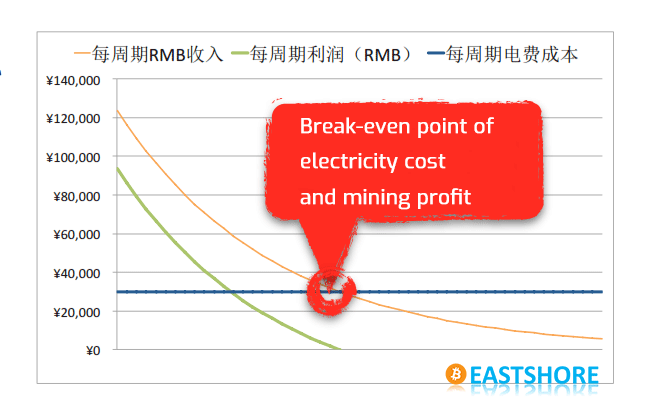
Ⅲ. Operation maintenance
Operation maintenance refers to the capability of ensuring failure-free operation of mining farm, including trouble-shooting with timely solutions and restoration of mining production.
Operation maintenance mainly depends on whether there are professional staff on duty in mining farms.
Although it’ll not be directly reflected in mining revenues, it should be taken into consideration before investment. If a mining farm with 5P hashrate can only ensure half of its normal operation time, the revenue will certainly be less than a farm with only 2P hashrate if 99% of its operation is normal.
It should be noted that bitcoin’s algorithm determines that the difficulty of mining is continuously increasing, and the revenues resulting from the same hashrate at different times can be greatly different! Can you imagine such a situation that a slovenly expert suddenly appears in the mining farm with professional on-duty staff and helps to solve the problem with cigarette, while you, the investor, only need to check the status of mining farm through surveillance system without any disruption to your romantic dating!

Crypto Market
Ⅰ. Bitcoin price
It directly affects the revenue, but it’s very hard to make the medium and long-term prediction due to big fluctuation. As the maximalist, I’m optimistic on bitcoin to dominate the all cryptocurrency market at the price of 10,000 dollars, however, it’s still unknown when it will be realized because the beautiful future is always accompanied with various twists.
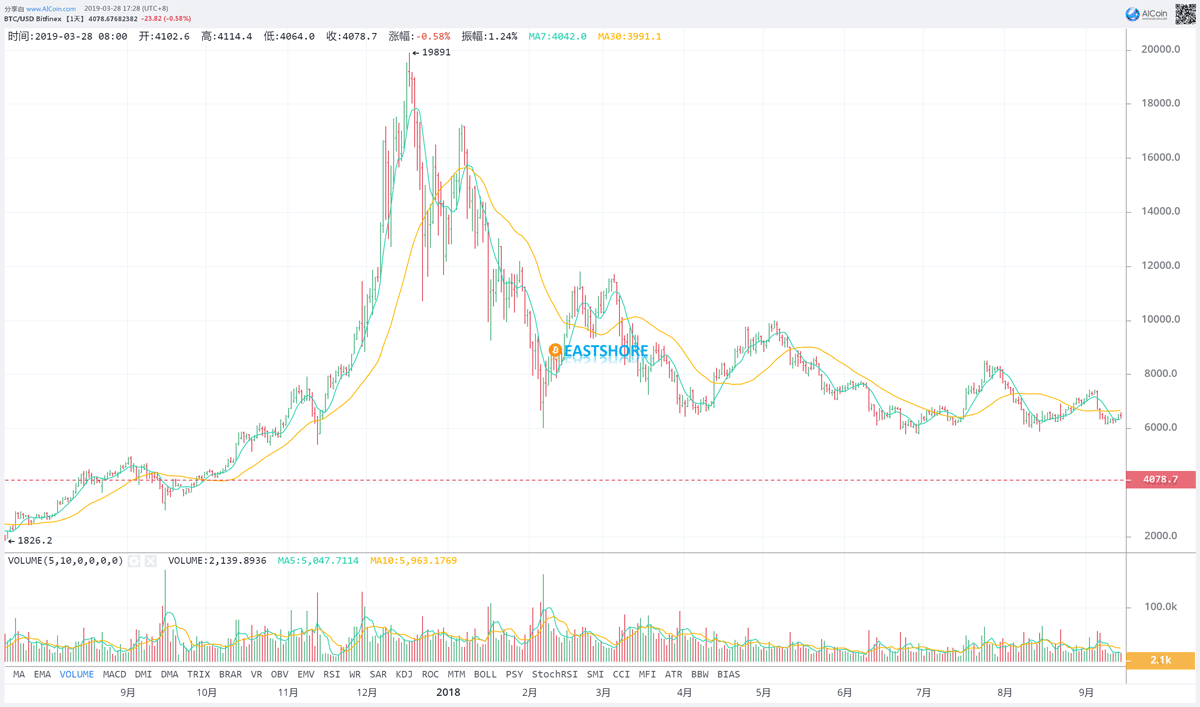
In the revenue model, the calculation is still based on constant cryptocurrency price. It should be noted that the BTC price is one of the biggest risks of mining revenues. If the price drops, the chances of mining loss are also greatly increased. Considering the capital investment and time cost, it’s not worthwhile indeed.
In the long run, the BTC price will be mainly affected by macroeconomic environment such as regulatory policies, industry development and public awareness instead of human factors; in the short run, there may be human influences.
Ⅱ. HashRate
The hashrate can’t be monitored in real time, it’s just the statistics in the previous cycle, so it’s less likely influenced by individual/single institution since nobody can accurately predict the growth changes.
Currently, the industry tycoons usually make the comprehensive prediction based on the factors such as the amount of investment in market, upstream chip capacity and bitcoin price changes.
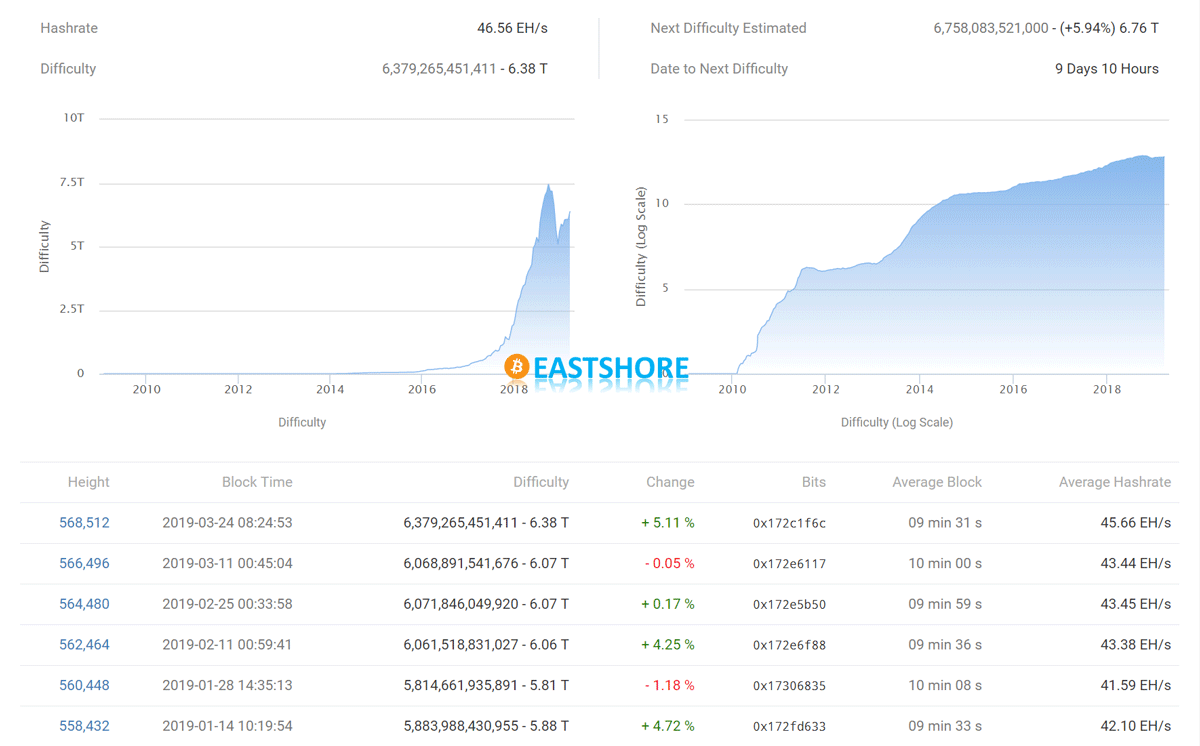
Ⅲ. Growth rate of difficulty
Just like the hashrate, it’s impossible to make accurate prediction, so it’s less likely affected by individual/single institution. Only when the chip capability has been greatly improved with upgraded hardware, the hashrate may skyrocket again
Summary
Among the four major factors affecting revenues:
- Algorithm belongs to the inherent feature of bitcoin which restricts other factors.
- Hardware performance and power consumption are continuously optimized with new technologies and miner manufacturers are also trying to make improvement;
- The mining farm deployment now tends to be centralized with large scale to reduce mining cost and increase revenue by means of total quantity control;
- Markets are affected by macroenvironment with both risks and opportunities.


Pingback: Factors Affecting Cryptocurrency Mining Profit www.eastshoremining.com… – Crypto